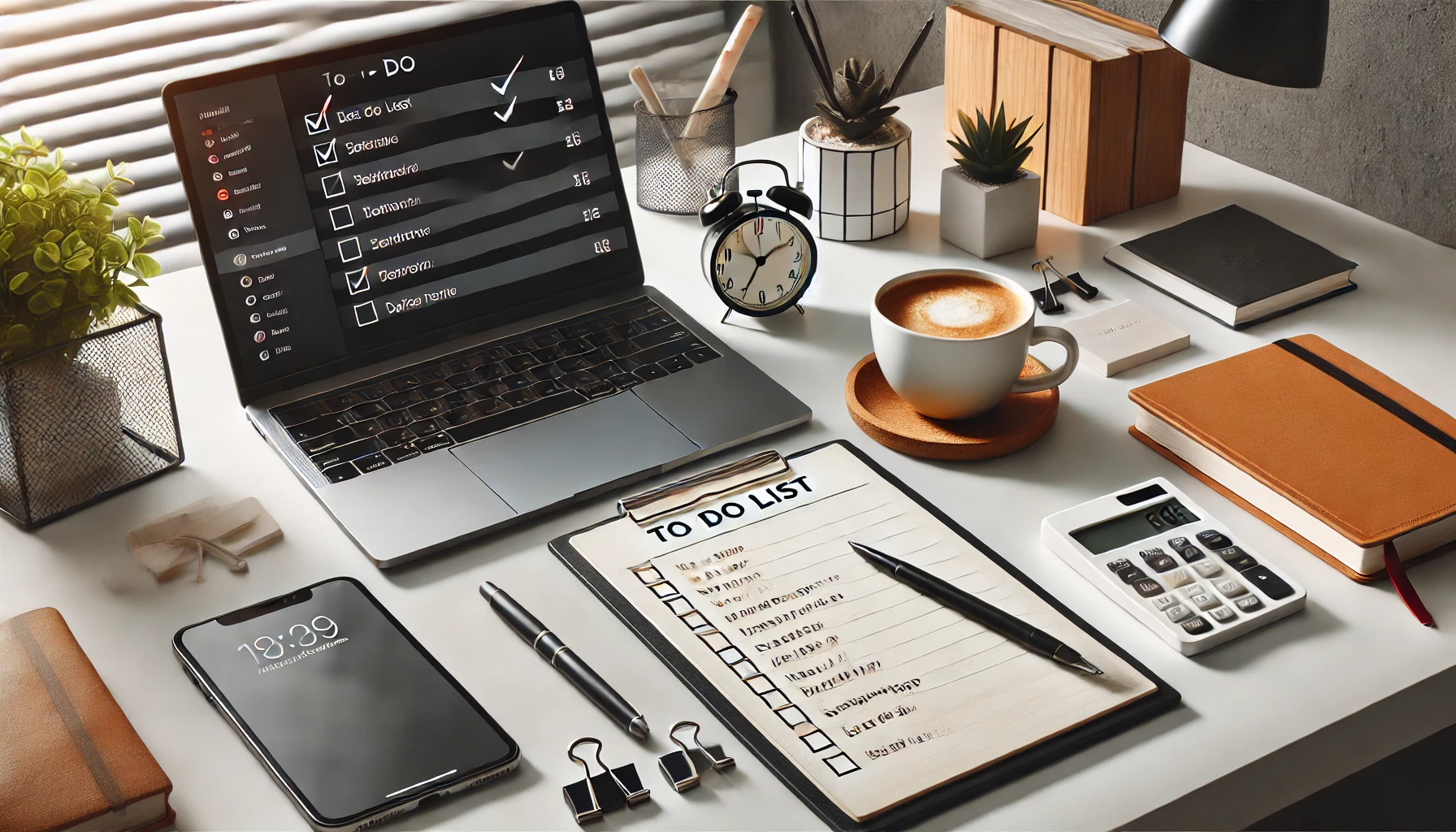A to-do list is one of the simplest yet most powerful tools for productivity. However, many people struggle with making lists that actually help them complete tasks. A poorly structured list can lead to overwhelm and inefficiency, while an effective list provides clarity and direction.
Here’s how to create a practical to-do list that helps you stay organized and accomplish more.
1. Keep It Simple and Specific
A common mistake is making to-do lists too long or vague. Instead of writing “Work on project”, break it down into actionable steps like “Write project outline” or “Complete first draft”.
The more specific a task is, the easier it is to complete. A well-structured list prevents decision fatigue and makes it clear what needs to be done next.
2. Prioritize Tasks Using the Eisenhower Matrix
Not all tasks have the same level of importance. The Eisenhower Matrix is a great tool for prioritization:
- Urgent & Important – Do these tasks immediately.
- Important but Not Urgent – Schedule them for later.
- Urgent but Not Important – Delegate if possible.
- Not Urgent & Not Important – Eliminate or postpone.
Focusing on high-priority tasks ensures that the most meaningful work gets done first.
3. Set Realistic Goals
Overloading your to-do list can lead to frustration. Keep your daily list manageable, ideally with five to seven key tasks.
If a task requires more than an hour, break it into smaller steps to create a sense of progress and avoid procrastination.
4. Use Time Blocks to Stay on Track
Instead of working through a random list of tasks, assign specific time blocks to each one. For example:
- 9:00 AM – 10:30 AM: Work on project proposal
- 10:30 AM – 11:00 AM: Check and respond to emails
- 11:00 AM – 12:00 PM: Prepare presentation
Using time blocks helps maintain focus and reduces decision fatigue throughout the day.
5. Review and Adjust Your List Daily
At the end of the day, take a few minutes to review your list:
- Check off completed tasks to track progress.
- Move unfinished tasks to the next day’s list.
- Adjust priorities based on new developments.
This simple habit ensures that your to-do list remains effective and aligned with your goals.
6. Use a Digital or Paper Planner
Some people prefer digital apps, while others find traditional paper planners more effective. Try different tools and find what works best for you:
- Digital apps: Todoist, Microsoft To Do, Google Keep.
- Paper planners: Bullet journals, daily planners, sticky notes.
Using a system that fits your style increases the chances of consistently following through with tasks.
7. Reward Yourself for Completing Tasks
Motivation plays a big role in productivity. After completing important tasks, give yourself a small reward, like a short break, a snack, or a walk.
Building positive reinforcement around productivity helps create lasting habits and makes completing tasks feel more satisfying.
Final Thoughts: Make Your To-Do List Work for You
A well-organized to-do list isn’t just about writing down tasks—it’s about making them manageable and actionable. Start by keeping your lists simple, prioritized, and time-bound.
Experiment with different methods and tools until you find a system that keeps you focused and helps you accomplish more with less stress.
